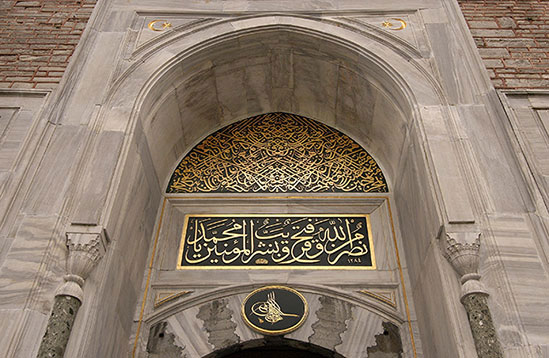Professor Akin-Kivanc Awarded American Council of Learned Societies Fellowship
Tuesday, April 25, 2017
Muthanna writing – a type of Islamic calligraphy consisting of bilaterally symmetrical designs – is a topic of mystery to art historians.
Dr. Esra Akin-Kivanc, Assistant Professor of Islamic Art and Architecture at the School of Art and Art History, is working to change that. She has been awarded an American Council of Learned Societies (ACLS) Fellowship, which she will use to work full-time on her muthanna research project.
The American Council of Learned Societies is a leader in supporting scholarly research in the humanities and related social sciences. In the 2015 – 2016 year, the ACLS awarded over $18 million to more than 300 scholars.
The ACLS received nearly 1,200 applicants for 2017 fellowships. Akin-Kivanc is one of only 71 researchers selected as ACLS fellows in 2017.
Her findings will be published in a book, Muthanna/Mirror Writing in Islamic Art: History, Theory, and Aesthetics, which she plans to complete by the end of 2017.
It is generally believed that muthanna is a quintessential Islamic form that originated in the 15th century, though scholarship on the topic is lacking. Once Akin-Kivanc began researching, however, she found examples from the pre-Islamic period, including Coptic and Greek specimens.
"[Art historians] all thought this writing originated in the 15th century," said Akin-Kivanc. "But I found out that no, we have examples going back as early as the Late Antiquity, between the 7th and 9th centuries."
Akin-Kivanc began research for Muthanna/Mirror Writing in Islamic Art with a trip to Turkey in early 2014. There, she gathered materials by photographing architecture, browsing artwork at libraries and archives, and searching the internet relentlessly. Since the current understanding of muthanna is limited, entire online collections had to be sorted through.
"I had to look at them one by one to see if they were mirror writing," said Akin-Kivanc.
For the next three years, Akin-Kivanc continued to collect materials as she worked on the book.
When released, Muthanna/Mirror Writing in Islamic Art will contain a construction of the history of mirror writing, refuting the idea that it was created in a "historic cultural vacuum."
"I am taking it out of its limited Islamic context and connecting it to pagan, Judaic, and Christian religious beliefs and artistic traditions as well," said Akin-Kivanc.
Both Brill Academic Publishers and Indiana University Press have expressed interest in publishing the manuscript.
Akin-Kivanc's work is a significant contribution to the discipline of art history. It is her area of expertise but it is also so much more.
She believes that art history reveals humanness and the shared values of different peoples. She sees art history as a neutral and accessible way of starting conversations that may otherwise be considered controversial.
"I think it's a field that brings us all together, rather than dividing us," said Akin-Kivanc. "It really highlights our shared human abilities, and it brings the best out of us."

This 15th century example of muthanna at the Imperial Gate of the Topkapi Palace in Istanbul, Turkey shows the intricate, bilaterally symmetrical design.